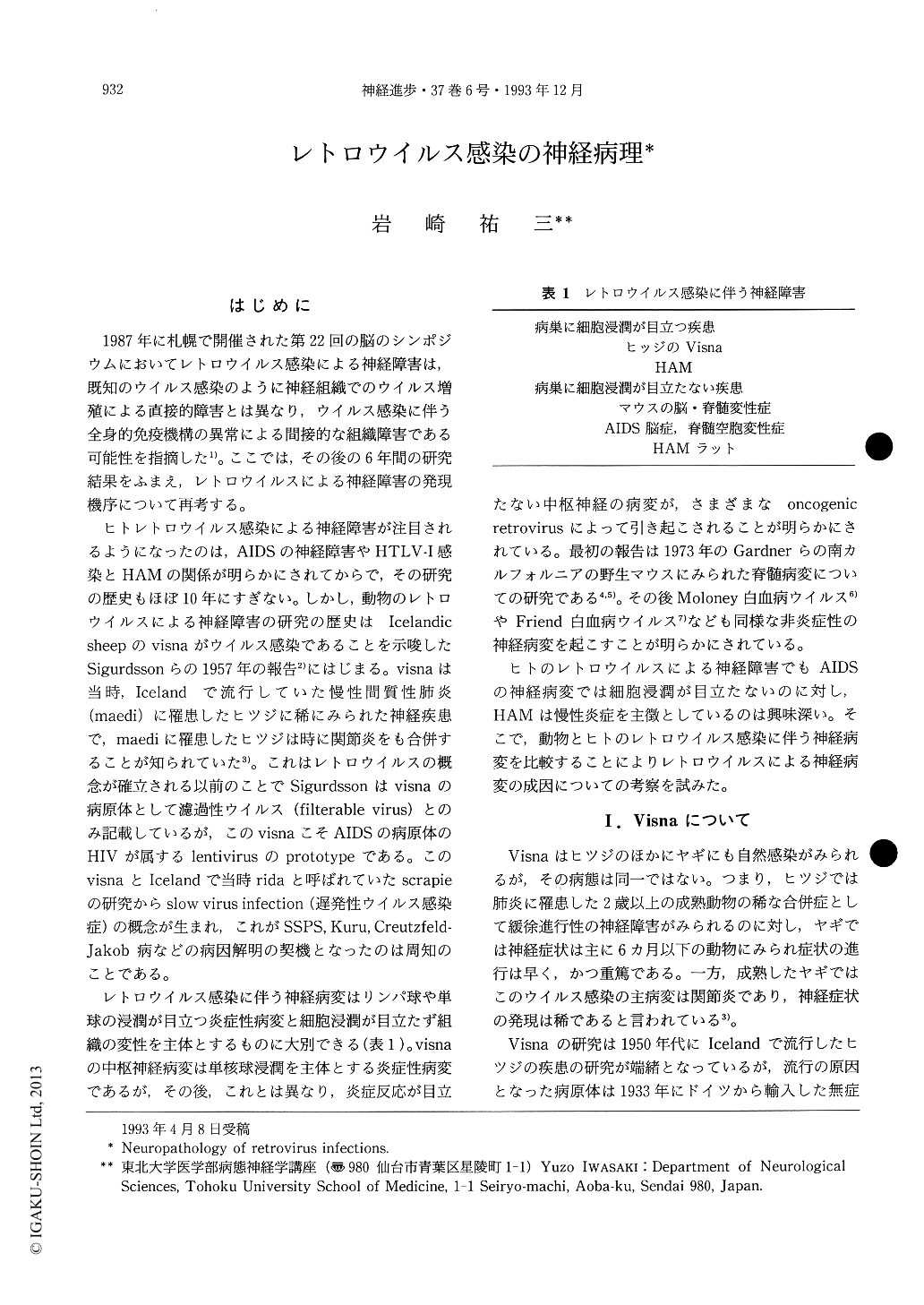Japanese
English
- 有料閲覧
- Abstract 文献概要
- 1ページ目 Look Inside
はじめに
1987年に札幌で開催された第22回の脳のシンポジウムにおいてレトロウイルス感染による神経障害は,既知のウイルス感染のように神経組織でのウイルス増殖による直接的障害とは異なり,ウイルス感染に伴う全身的免疫機構の異常による間接的な組織障害である可能性を指摘した1)。ここでは,その後の6年間の研究結果をふまえ,レトロウイルスによる神経障害の発現機序について再考する。
ヒトレトロウイルス感染による神経障害が注目されるようになったのは,AIDSの神経障害やHTLV-I感染とHAMの関係が明らかにされてからで,その研究の歴史もほぼ10年にすぎない。しかし,動物のレトロウイルスによる神経障害の研究の歴史はIcelandicsheepのvisnaがウイルス感染であることを示唆したSigurdssonらの1957年の報告2)にはじまる。visnaは当時,Icelandで流行していた慢性間質性肺炎(maedi)に罹患したヒツジに稀にみられた神経疾患で,maediに罹患したヒツジは時に関節炎をも合併することが知られていた3)。これはレトロウイルスの概念が確立される以前のことでSigurdssonはvisnaの病原体として濾過性ウイルス(filterable virus)とのみ記載しているが,このvisnaこそAIDSの病原体のHIVが属するlentivirusのprototypeである。このvisnaとIcelandで当時ridaと呼ばれていたscrapieの研究からslow virus infection(遅発性ウイルス感染症)の概念が生まれ,これがSSPS,Kuru,Creutzfeld-Jakob病などの病因解明の契機となったのは周知のことである。
Virological and neuropathological correlates in visna, HIV encephalopathy, HAM, HTLV-I infected rats and murine retrovirus induced CNS diseases are reviewed.
Ample evidence indicates all human and animal retroviruses infect and replicate in monocyte/macrophage lineage cells. It is speculated that the infection of monocyte/macrophage lineage cells plays a decisive role in the development of CNS diseases not only in AIDS and visna but also in other retrovirus infections even though the mechanisms of neural tissue damage remain poorly understood.

Copyright © 1993, Igaku-Shoin Ltd. All rights reserved.


